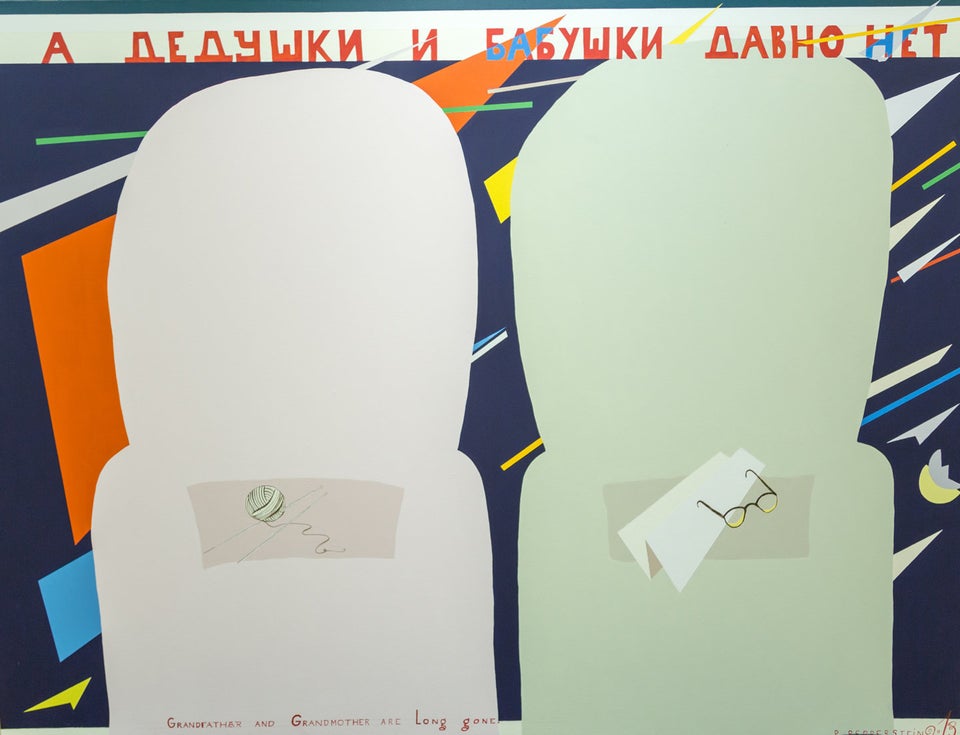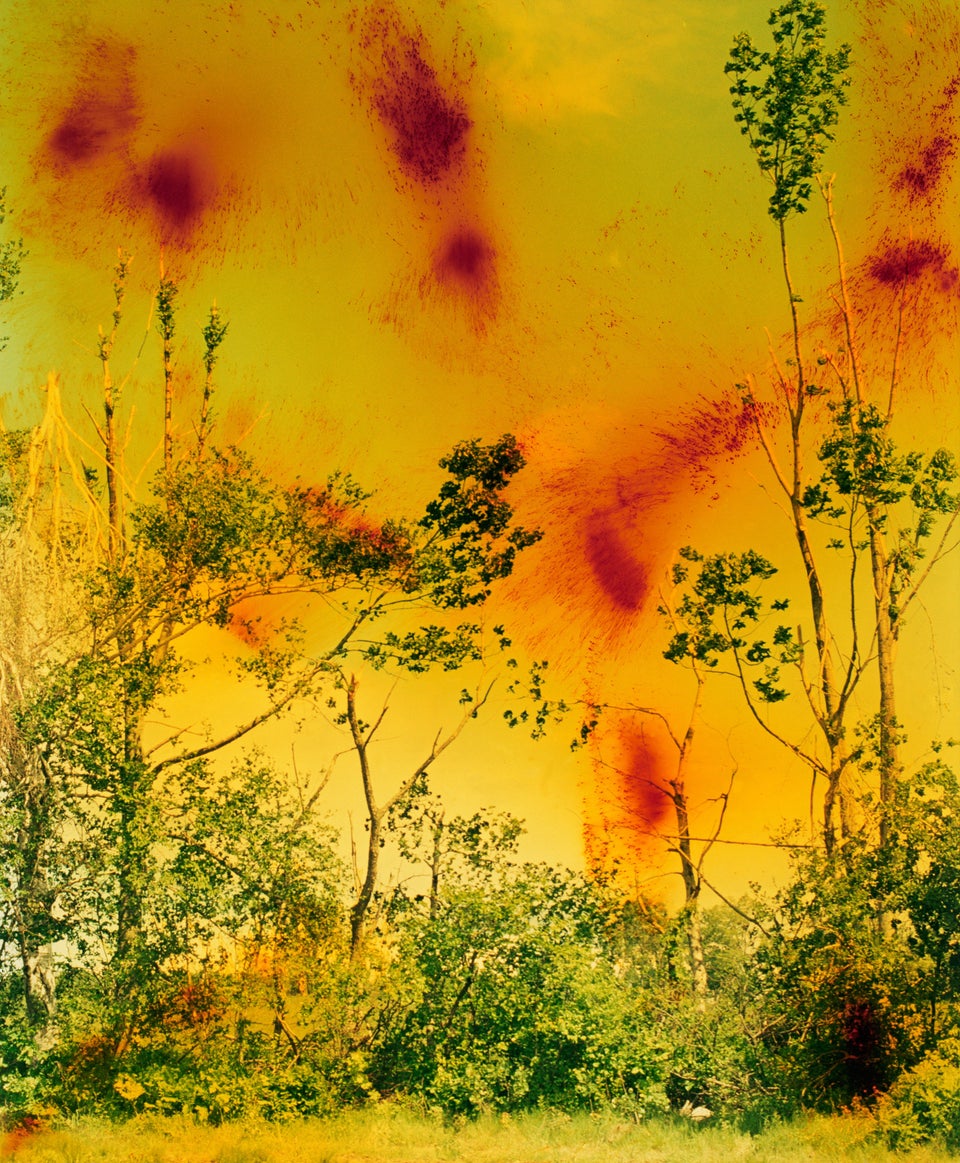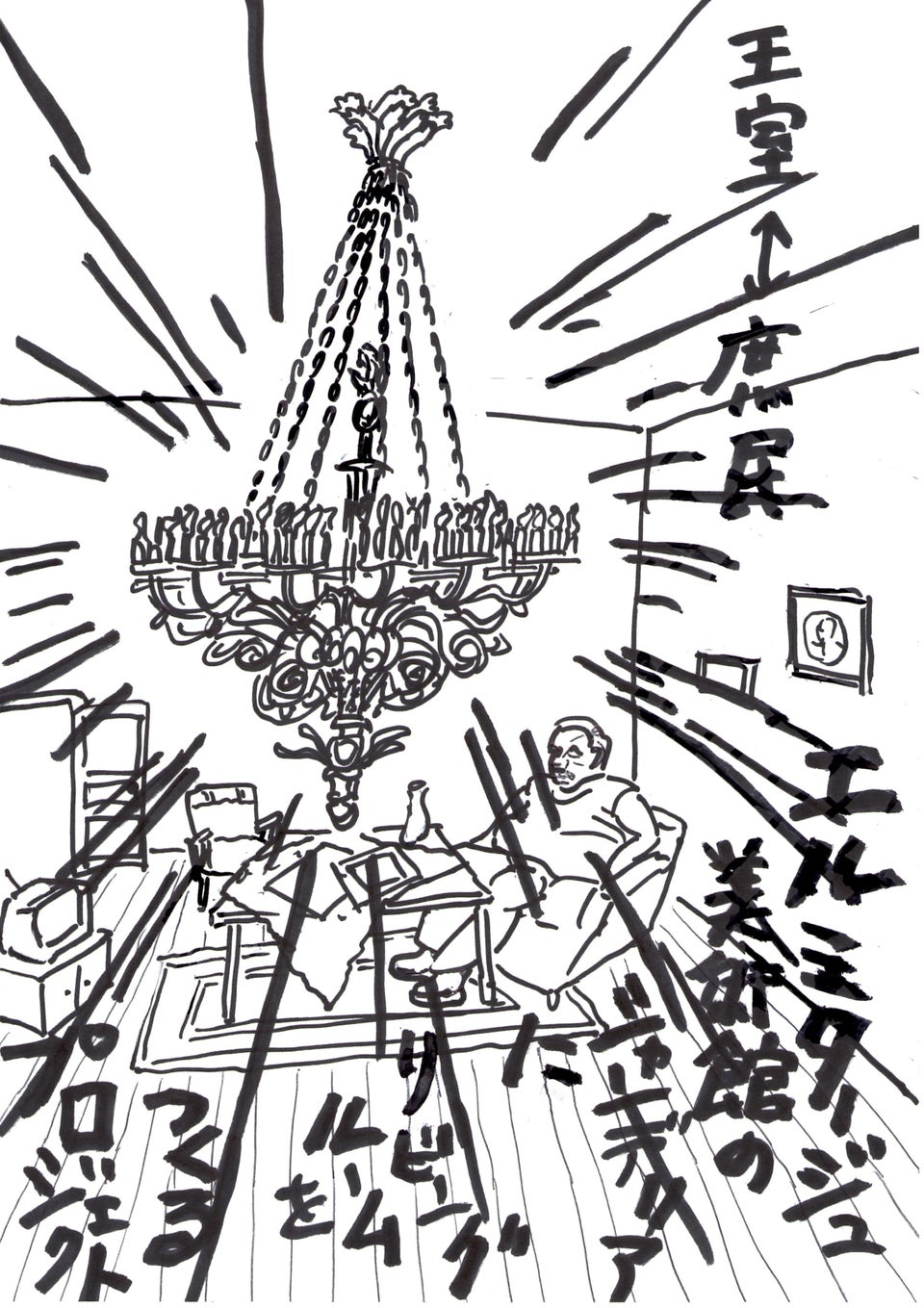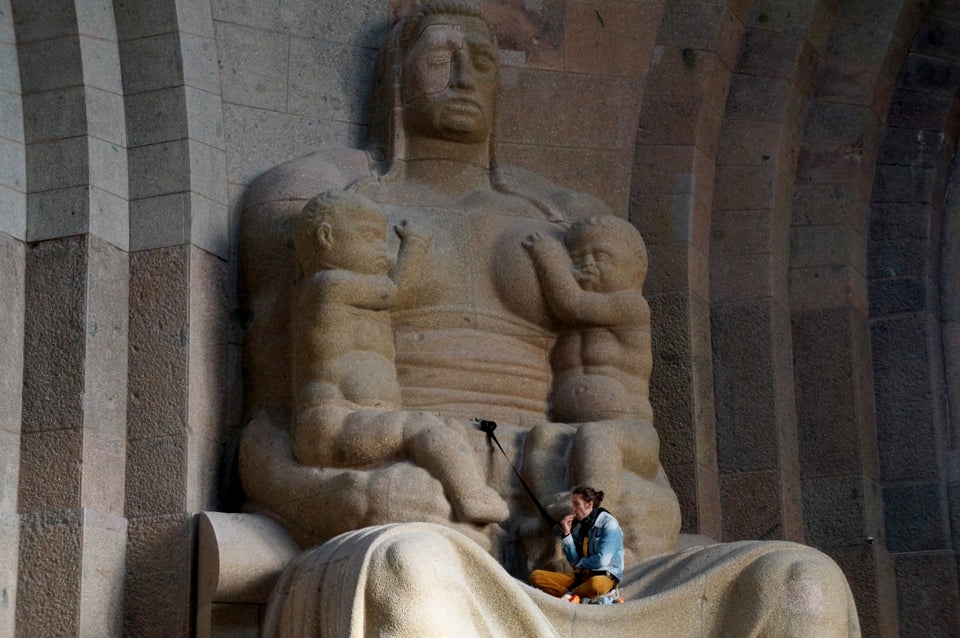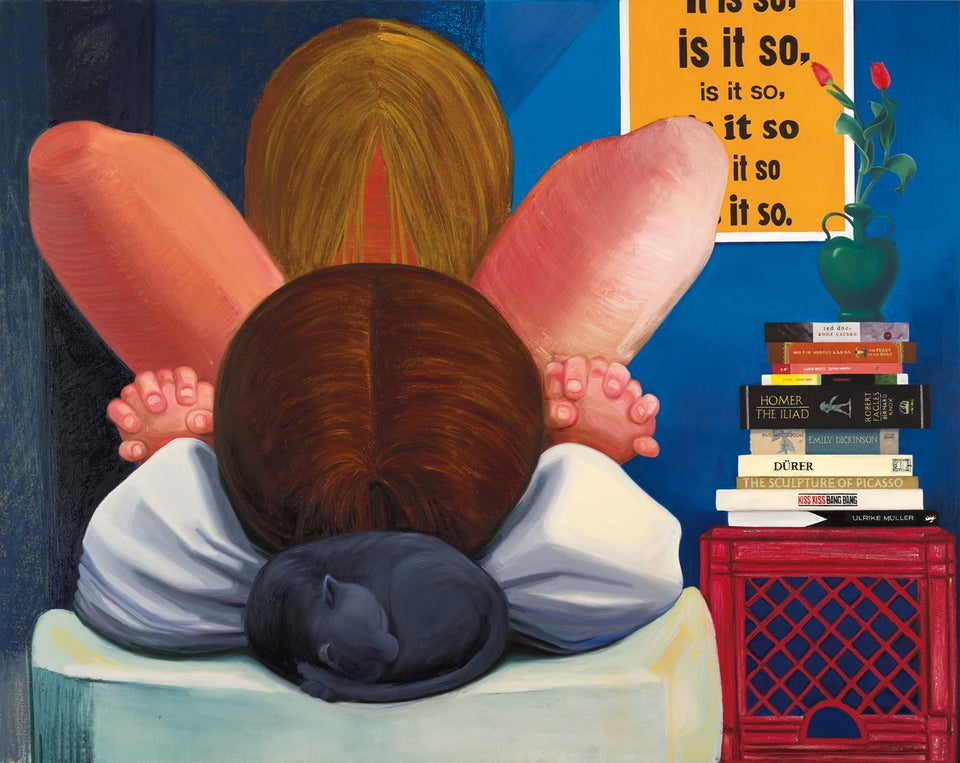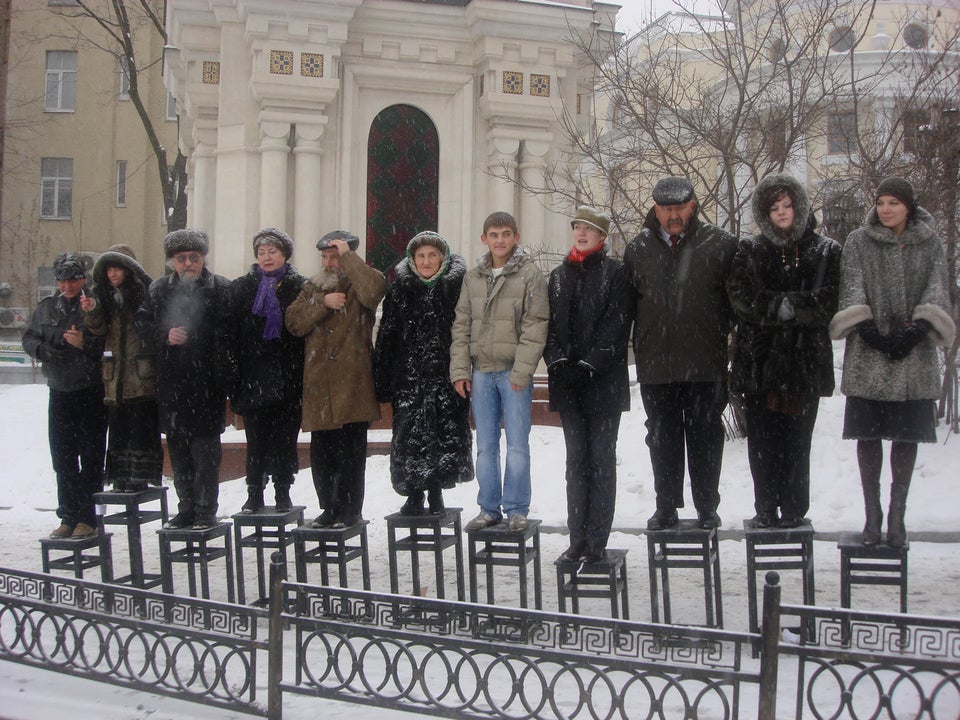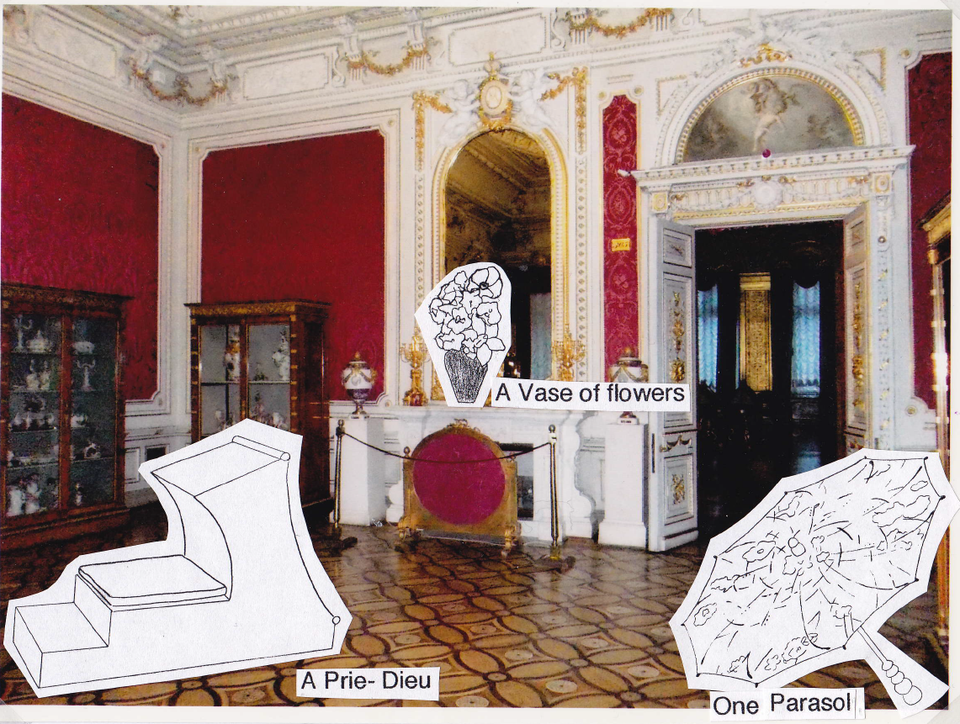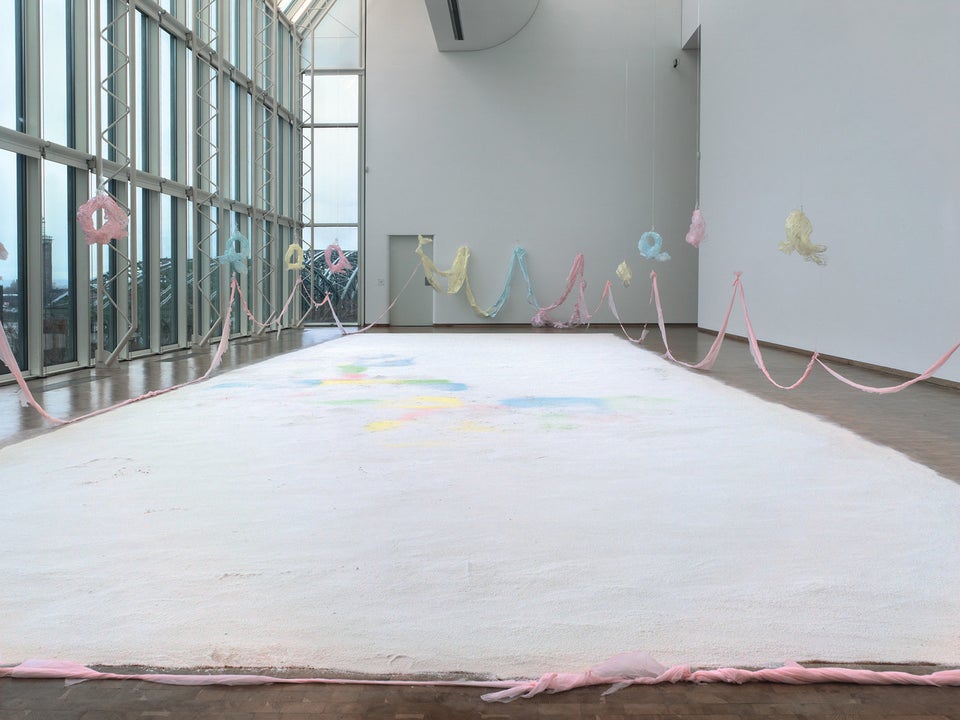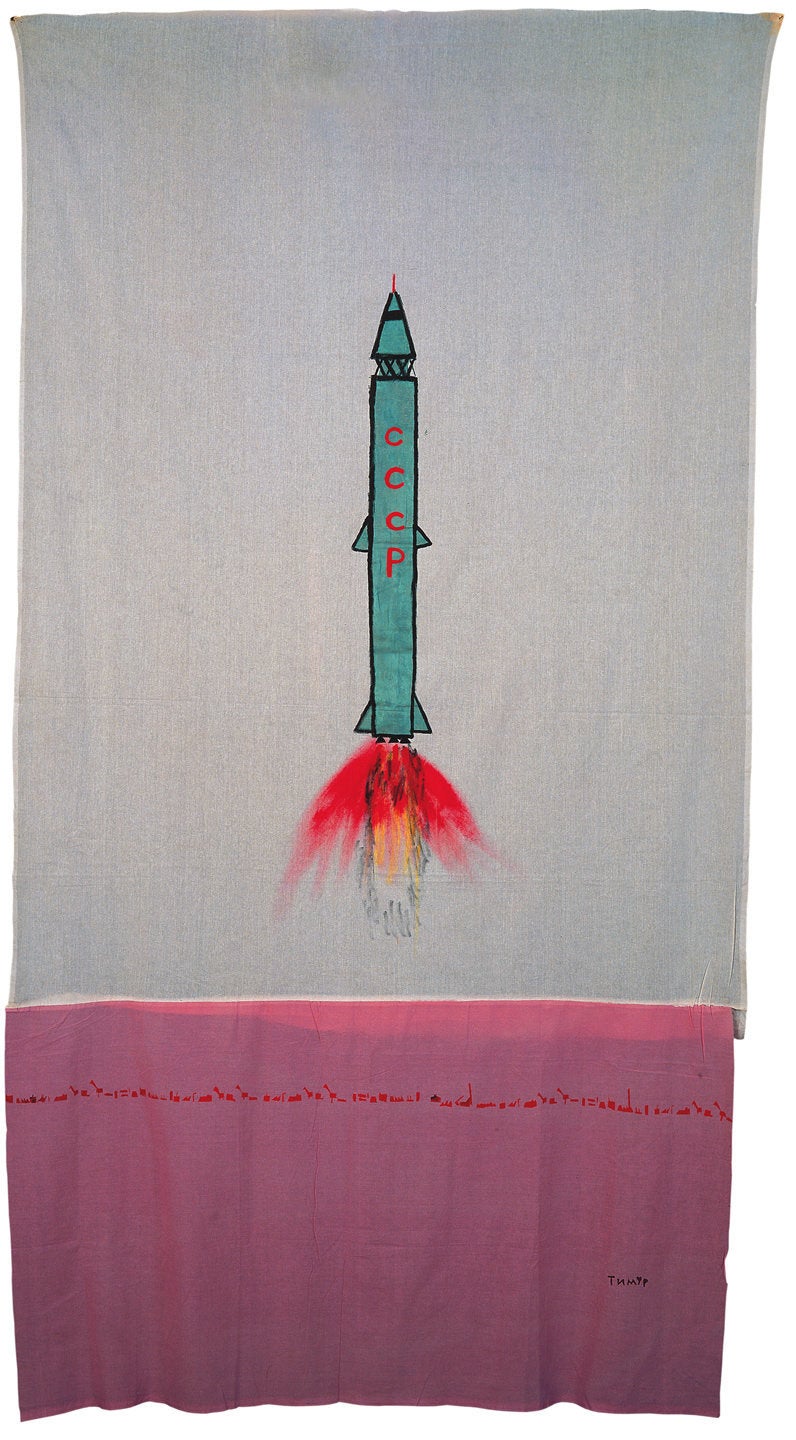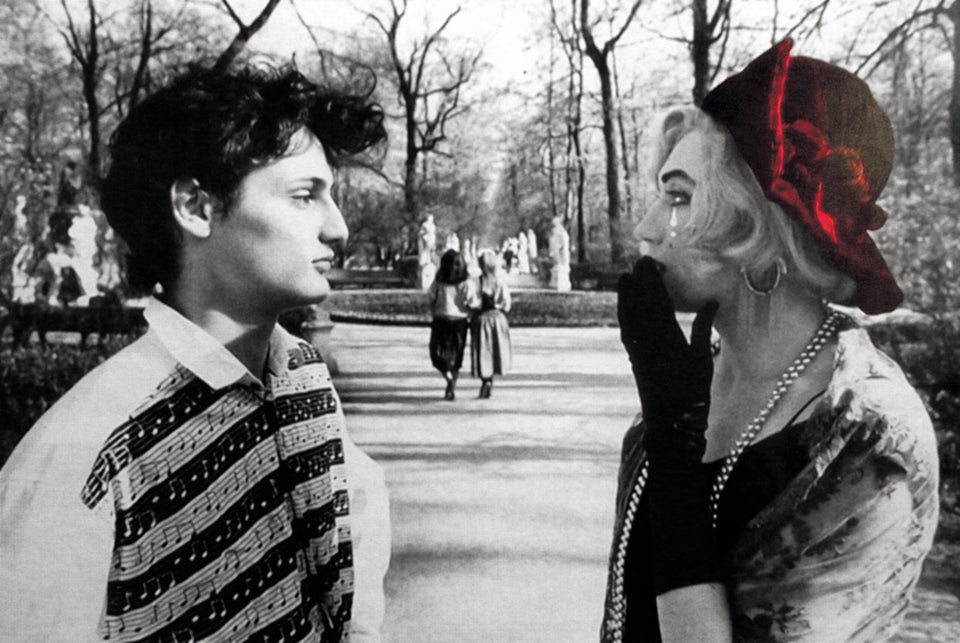Over fifty five contemporary artists have gathered in St. Petersburg to infiltrate one of the world's oldest museums. Why? Because Manifesta, the nomadic European Biennial that sets up shop in a different city every two years to bridge the gap between East and West, fixed its sights on Russia for the 10th version of the festival.

Francis Alÿs, Draft for Lada Kopeika Project, 2014, Collage with gold leaf, 11.5 x 13 cm, courtesy of the artist and David Zwirner Gallery.
The timing couldn't have been worse. As curators began planning Manifesta 10, tensions between Ukraine -- a country undergoing yet another revolution -- and Russia intensified. Russian forces eventually flooded into Crimea, a disputed peninsula on the Black Sea between the two countries, and the world observed territorial annexation in the 21st century. While the diplomatic image of the former Soviet Union dipped below satisfactory, Russia's domestic affairs fared no better. Anti-gay legislation and state-led censorship peaked. Authoritarianism seemed all but on the rise for a nation spanning over one-eighth of planet Earth.
Despite the obvious obstacles, the Manifesta team forged forward. While some artists pulled their support of the biennial by boycotting, the festival remained steadfast. Manifesta curator Kasper König, along with State Hermitage Museum director M. Piotrovsky and Manifesta director Hedwig Fijen, made their intentions clear early on.
"Manifesta stands for artistic independence and has a responsibility to art and artists and those who wish to engage with the context in which we situate ourselves," Fijen stated in a press release last March. "Our work is one of debate, negotiation, mediation, and diplomacy, that does not shy away from the conflicts of our time. At a time when everything tends to be read through a geo-political lens, art is there to provide complexity and nuance.”
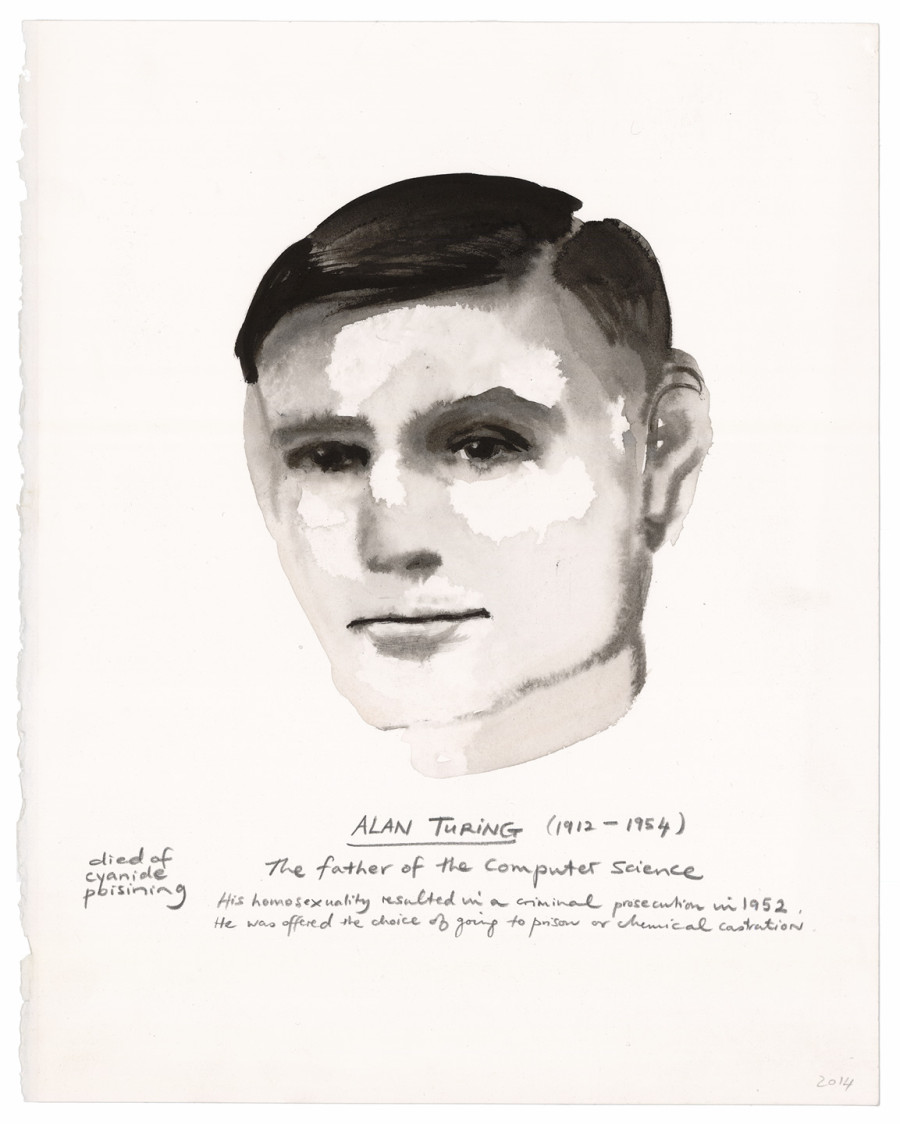
Marlene Dumas, Alan Turing, 2014. Ink on paper, 44 x 35 cm.Photo credit: Bernard Ruijgrok Piezographics. Copyright and courtesy: Marlene Dumas. Commissioned by Manifesta 10 Saint Petersburg, Russia.
Before the biennial officially opened on June 28, König and his team faced unfulfilled financial agreements with the city of St. Petersburg and a slew of other local bureaucratic setbacks that forced staff to go unpaid for two months. Now, more than two weeks into the biennial, Manifesta has left only some of the hurdles behind it. The show has, as they say, gone on anyway, and critical responses have been mixed thus far.
"A few terrific works don't make a great or telling exhibition," Adrian Searle wrote in The Guardian. "It all feels too wary. It offers too little conflict and not enough hope."
"There’s a refreshingly solid balance between male and female artists in the show," Alexander Forbes proclaimed in Artnet, describing the show as "a sort of anti-teleological view on artistic developments, both in aesthetics and society at large, since the fall of the Berlin Wall."
Like most art fairs of this scale, reviews will fluctuate, with some taking a shining to the way exhibitors and curators have framed 25 years of post-USSR art making, and others not. As far as the biennial's ability to raise questions in and around the art world, there's no denying the festival's power. From Marlene Dumas to Gerhard Richter, Nicole Eisenman to Wolfgang Tillmans, the participating artists confront violence and sexuality in ways that only shine a spotlight on the deficiencies of present day Eastern Europe -- even if those deficiencies have wound their way into Manifesta's temporary home.
Pavel Pepperstein, Grandfather and Grandmother are long gone, acrylic on canvas, 150 x 200 cm, made in 2013 ©Pavel Pepperstein, Courtesy Nahodka Arts & Pace London.
Erik van Lieshout, The Basement, 2014 (working title), HD installation, colour, sound, 20 minutes, wood, carpet, xerox copies with the financial support of Mondrian Foundation, Netherlands Film Fund, Outset NL, courtesy Annet Gelink Gallery, Amsterdam
Wolfgang Tillmans, Icestorm, 2001
Tatzu Nishi, Drawing of So I only want to love yours, 2014. Felt pen on paper, 21 x 29.7 cm (A4 size). Courtesy the artist. Commissioned by Manifesta 10 Saint Petersburg, Russia.
Alexandra Pirici - Persistent Feebleness, 2013, interventions and sculptural additions to the Four German Virtues, Battle of Nations Monument, Leipzig.
Nicole Eisenman, It is so. 2014. Oil on Canvas. 65 x 82 in. Courtesy of the Artist and Koenig & Clinton, New York; Photo credit: John Berens
Elena Kovylina, Still from the Video of her Performance -Equality,- 2009. Courtesy of the Artist.
Marc Camille Chaimowicz, Photomontage no. 1 for The Hermitage, Room 305, London, winter 2013. Photomontage on paper, 21 x 29.7 cm. Courtesy the artist and Cabinet, London.
Gerhard Richter, Ema, Akt auf einer Treppe (Ema, Nude on a Staircase), 1966. Oil on canvas, 200 x 130 cm. Museum Ludwig (ML 01116, Cologne). Photo: © Rheinisches Bildarchiv Köln
Karla Black, Nature Does The Easiest Thing, 2011 (detail). Plaster powder, powder paint, cellophane, sellotape, paint, polythene, thread, 210 x 1580 x 500 cm. Installation view, Before the law (group exhibition), Museum Ludwig, Cologne, 2011.
Timur Novikov. Start (rocket), Acrylic on textile 1989, (296x296,5 cm) Collection of the artist family
Vladislav Mamyshev-Monroe. Tragic Love. 1993. Tragic Love. 1993. Black & white photo, hand-colored. Collection of Elena Selina – XL Gallery. Coutresy of the Artist's estate.
Check out a preview of Manifesta 10, on view until October 31 in St. Petersburg's State Hermitage Museum, above and let us know your thoughts on the event in the comments.
Support HuffPost
Our 2024 Coverage Needs You
Your Loyalty Means The World To Us
At HuffPost, we believe that everyone needs high-quality journalism, but we understand that not everyone can afford to pay for expensive news subscriptions. That is why we are committed to providing deeply reported, carefully fact-checked news that is freely accessible to everyone.
Whether you come to HuffPost for updates on the 2024 presidential race, hard-hitting investigations into critical issues facing our country today, or trending stories that make you laugh, we appreciate you. The truth is, news costs money to produce, and we are proud that we have never put our stories behind an expensive paywall.
Would you join us to help keep our stories free for all? Your contribution of as little as $2 will go a long way.
Can't afford to donate? Support HuffPost by creating a free account and log in while you read.
As Americans head to the polls in 2024, the very future of our country is at stake. At HuffPost, we believe that a free press is critical to creating well-informed voters. That's why our journalism is free for everyone, even though other newsrooms retreat behind expensive paywalls.
Our journalists will continue to cover the twists and turns during this historic presidential election. With your help, we'll bring you hard-hitting investigations, well-researched analysis and timely takes you can't find elsewhere. Reporting in this current political climate is a responsibility we do not take lightly, and we thank you for your support.
Contribute as little as $2 to keep our news free for all.
Can't afford to donate? Support HuffPost by creating a free account and log in while you read.
Dear HuffPost Reader
Thank you for your past contribution to HuffPost. We are sincerely grateful for readers like you who help us ensure that we can keep our journalism free for everyone.
The stakes are high this year, and our 2024 coverage could use continued support. Would you consider becoming a regular HuffPost contributor?
Dear HuffPost Reader
Thank you for your past contribution to HuffPost. We are sincerely grateful for readers like you who help us ensure that we can keep our journalism free for everyone.
The stakes are high this year, and our 2024 coverage could use continued support. If circumstances have changed since you last contributed, we hope you’ll consider contributing to HuffPost once more.
Already contributed? Log in to hide these messages.


